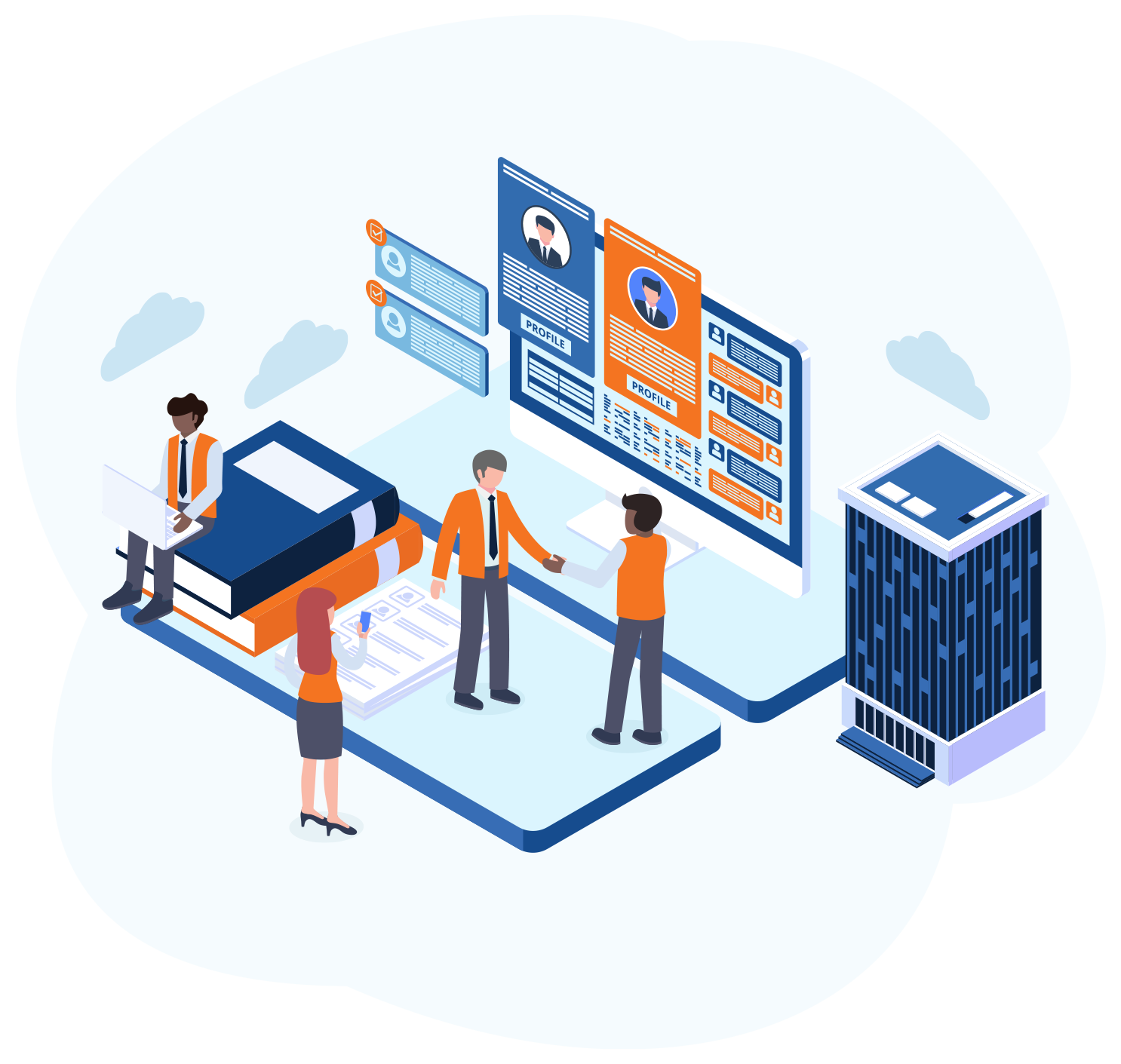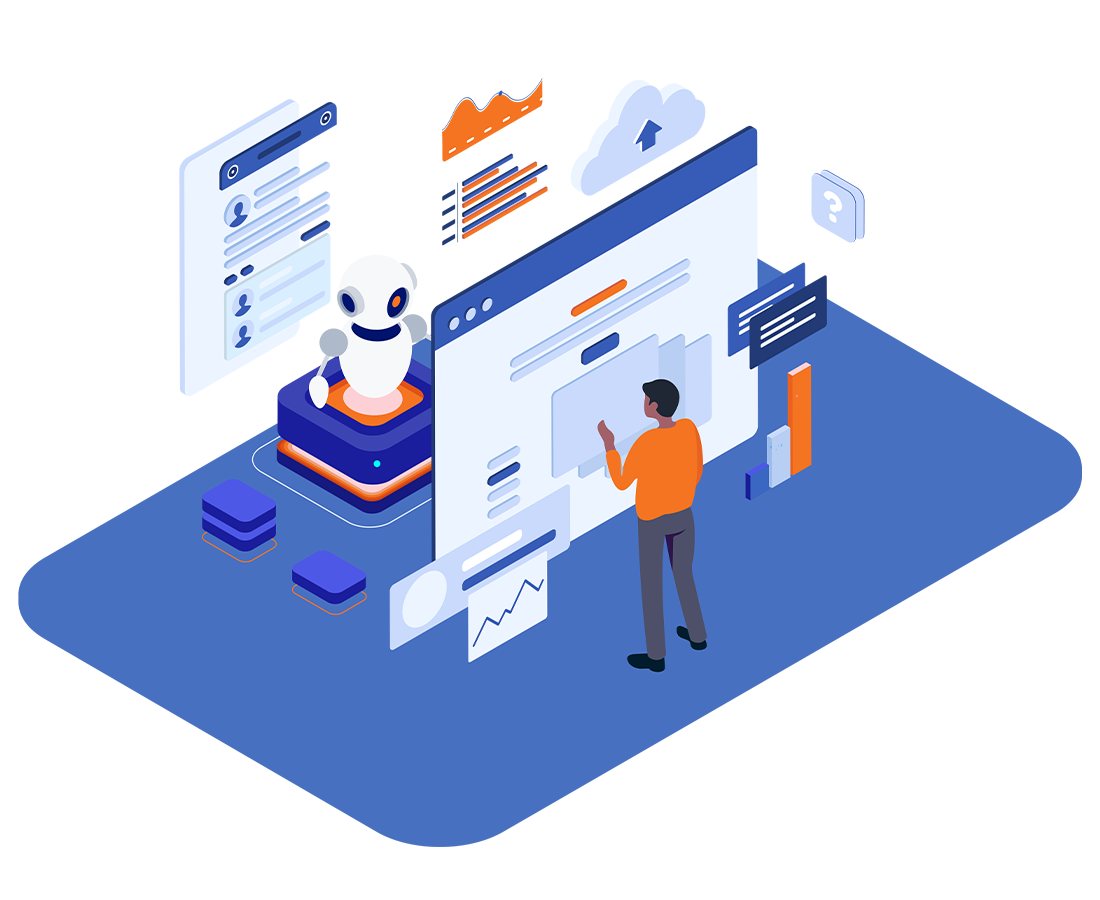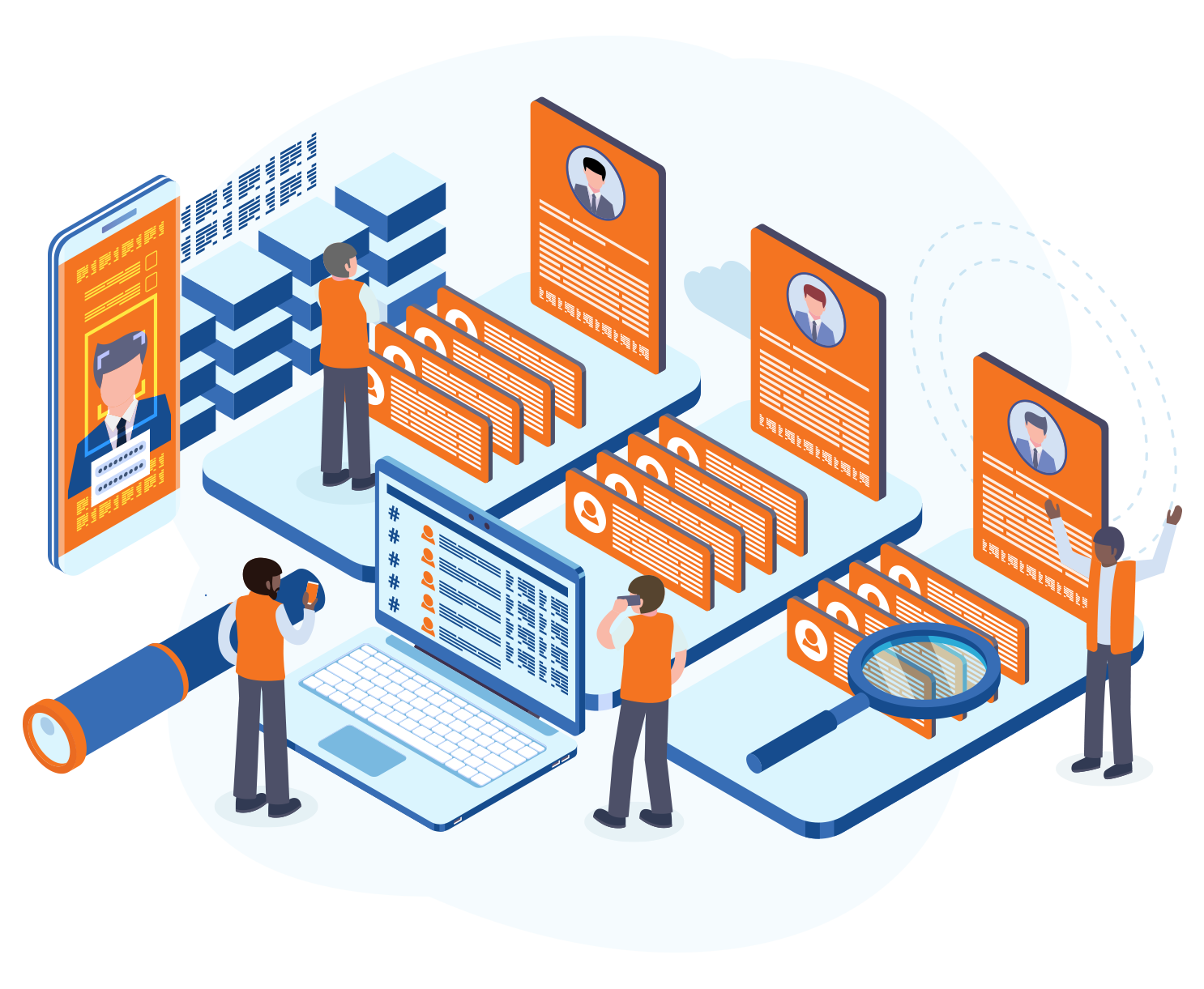RPA for Human Resources & PX

Utilizing Automation to Effectively Manage Staff
The most important part of any successful, thriving business is a robust, highly functioning workforce and strong People Experience (PX) – the human resources department is a crucial component of this.
However, between handling various requests and endless amounts of paperwork, your Human Resources Department can feel bogged down and overwhelmed. This is where automation comes in.
RPA can be utilized within your human resources to automate numerous manual tasks, leading to improved productivity and efficiency. We’ll explain how it’s done below.
What is RPA?
RPA uses software to carry out business processes that are traditionally performed manually by human staff. Using RPA solutions, an organization can configure “bots” to perform any repetitive, mundane business tasks within your HR department that typically take up excess amounts of time.
When an organization implements RPA solutions for HR related tasks, these processes can be fulfilled more rapidly than if they were performed manually. This gives your staff more time to focus on tasks that are higher priority and higher value to the organization.
Benefits of RPA
![]()
Some of the main benefits of implementing RPA solutions for Human Resources tasks include:

Improved Productivity
It’s a known fact that when employees feel bogged down by mindless, repetitive tasks, their productivity levels start to drop.
With bots handling these repetitive administrative tasks, your staff can focus on the more enjoyable aspects of the job and will feel more satisfied and productive at work.
Tasks Are Completed Faster
One of the most significant benefits of utilizing automation bots is that they can perform tasks at a significantly faster rate compared to humans – 20 times to be exact. Furthermore, the tasks are completed with more accuracy, reducing the risk of human error.
The best part? RPA bots don’t get injured, tired or sick, and they don’t require breaks or vacations. They operate at maximum capacity 24/7, 100% of the time, making RPA bots incredibly reliable.
More Consistency
With RPA solutions deployed, HR tasks are completed more consistently and reliably, without errors and variation. Processes become more reliable and dependable, removing any guesswork.
Better Flexibility
RPA bots are programmed to do what you tell them based on a specified set of rules. This makes RPA incredibly flexible, as it can be updated whenever you need to reflect any changes to rules and procedures within your organization.

RPA Use Cases For HR
Wondering how exactly you can implement RPA solutions within your Human Resources department?
Here are some examples of the most common HR use cases for automation:
Finding Candidates
![]()
Rather than relying on legacy HR systems to match you with candidates for certain positions, RPA can be used to automate the process of managing job postings, aggregating resumes and cover letters, assessing results, and compiling interview notes.
Exit Management
![]()
When it comes to managing employees’ exits, RPA can help automate tasks like generating exit documents, revoking access to company systems, and determining the severance package.
Verify Employment History
![]()
Verifying a candidate’s employment history is a tedious process involving numerous steps, such as setting up interviews and maintaining records. But it doesn’t have to be this way.
According to this case study, RPA can reduce 40% of the manual labour involved in verifying employment history. For example, email correspondence, setting appointments, along with other related tasks can all be automated.

Streamlining Hiring Processes
![]()
Between reviewing resumes and interviewing candidates, the hiring process can be long and drawn out. With RPA, bots can be deployed to analyze resume files and compare the information the candidate has provided regarding their skillset and employment history with the job requirements. Those who meet the requirements can then be sent an automated request to come in for an interview.
If the interview is successful, RPA can also be used to create and send an offer letter to the candidate. Using the criteria that you specify, bots can be deployed to create an offer letter tailored to the candidate and the position you are hiring for and send it off for signing.
Hiring & Onboarding Staff
![]()
Hiring new staff and conducting layoffs can be incredibly burdensome, not only for HR but other departments like IT, security, and facilities management. This can be a major issue for organizations experiencing major growth or downsizing.
Fortunately, with automation tools implemented, RPA bots can be deployed relatively fast and effectively to assist with onboarding staff along with the layoff process, while completing the necessary tasks for new or exiting employees.
In fact, the same case study previously mentioned also found that RPA could reduce onboarding time from 30 minutes to just 3 minutes.

Automating Payroll
![]()
Completing regular payroll functions is incredibly repetitive and must be done while taking into consideration different regulations and the organization’s rules. While most modern payroll software can be effective in streamlining this process, RPA offers a much more advanced solution that can help you process payroll 85% faster with no errors. Manual effort can also be reduced to just 25% of the entire process.
Managing Expenses
![]()
Expense reports are not only a tedious process for the staff creating them, but for the HR team reviewing and approving each individual expense.
This is only further complicated by the fact that most expense management systems are outdated and require employees to provide detailed notes for each expense, including the expense amount, date, and location – all of which are already included on the receipts the employee submits.
RPA can be used to extract information from receipts and fill in the relevant fields, saving your employees time on their expense reports.
Create Virtual HR Assistants
![]()
RPA can be used to create a chatbot that will take care of employees’ HR requests. Requests that can be handled by the chat bot include logging sick leave and vacation time, requesting information about an employment contract, and submitting expense reimbursements.
Worker’s Compensation Claims
![]()
When staff are absent from work due to injury or sickness, HR must report these absences to the claims management service provider so they can manage the workers’ compensation claims. Rather than performing this task manually, bots can be deployed to automate the process and alleviate the pressure from your HR team.
Absence Management
![]()
Recording every single absence and vacation manually can be difficult with a large staff, especially when staff are required to perform this task themselves. Often, these events go unreported, leading to further issues down the road. The solution? Automation.
RPA bots can be deployed to cross-check absentee reports against time logged in the corporate network and let your teams report their absences themselves. Another option is to deploy a bot to fill in absence information in case your staff forget to update the system when they are absent.
Using RPA for this purpose can reduce manual effort to just 5% while also reducing processing time by 80%.
Maintaining Compliance
![]()
Maintaining compliance within an organization is crucial to ensure that labour laws and other regulations are being followed. Unfortunately, though, ensuring compliance requires HR professionals to spend a significant amount of time reviewing, analyzing, and entering important information.
RPA can be used to automate compliance related activities to help speed up this process while reducing the risk of errors and delays.

HR Challenges Without RPA
Without RPA solutions implemented, many organizations continue to operate with outdated systems that lead to numerous departmental and organizational challenges.
Such challenges include:
Errors And Inconsistencies
When manually entering data and completing important documents, errors often occur that can lead to severe consequences.
Such errors can include incorrect expense payouts, discrepancies in contracts, and vacation time not being logged.
Inability To Scale
The Human Resources department is the backbone of any organization. When they are forced to complete tasks manually, this makes it difficult for the organization as a whole to achieve sustainable growth.
Tasks Are Completed At A Slower Rate
Without modern solutions in place such as automation, tasks are completed at a much slower rate, which can create a chain reaction throughout the rest of the organization.


Without RPA solutions implemented, many organizations continue to operate with outdated systems that lead to numerous departmental and organizational challenges.
Such challenges include:
Errors And Inconsistencies
When manually entering data and completing important documents, errors often occur that can lead to severe consequences.
Such errors can include incorrect expense payouts, discrepancies in contracts, and vacation time not being logged.
Inability To Scale
The Human Resources department is the backbone of any organization. When they are forced to complete tasks manually, this makes it difficult for the organization as a whole to achieve sustainable growth.
Tasks Are Completed At A Slower Rate
Without modern solutions in place such as automation, tasks are completed at a much slower rate, which can create a chain reaction throughout the rest of the organization.
Think RPA is Right For You?
Whether you are a beginner to the world of Robotic Process Automation and require some guidance, or you are already familiar with RPA solutions, our goal at Thrive Automation is to ensure your team is fully supported and empowered to implement RPA in a way that helps your business reach its full potential.
We offer the following options, depending on your knowledge and experience level with RPA:
- Automation Readiness Audit (ARA)
- Automation Roadmap
- Automation Pilot
- Automation Centre of Excellence
- Thrive Care
